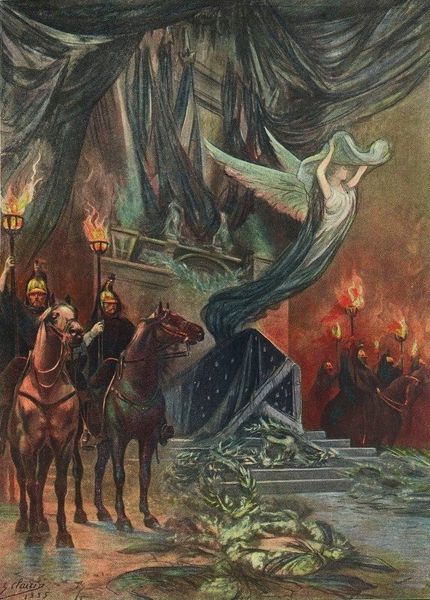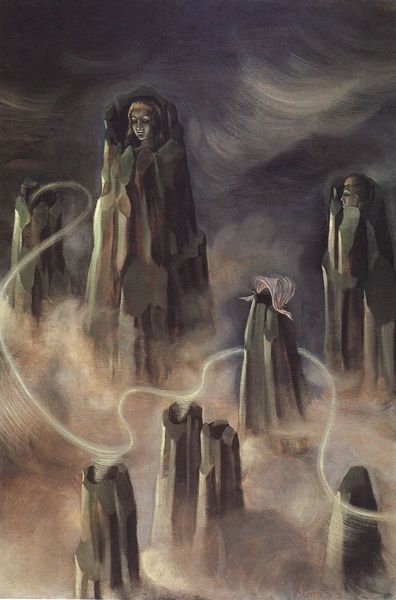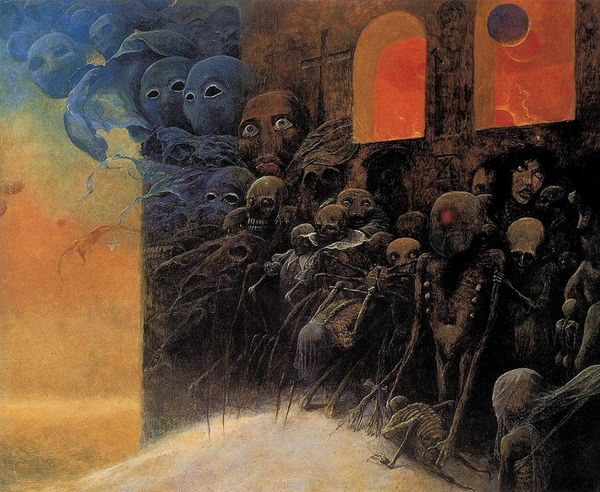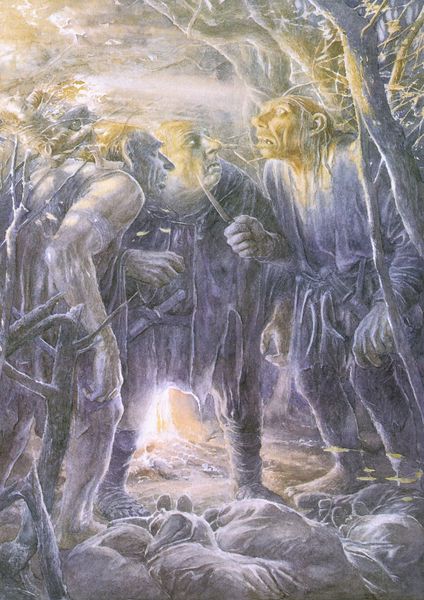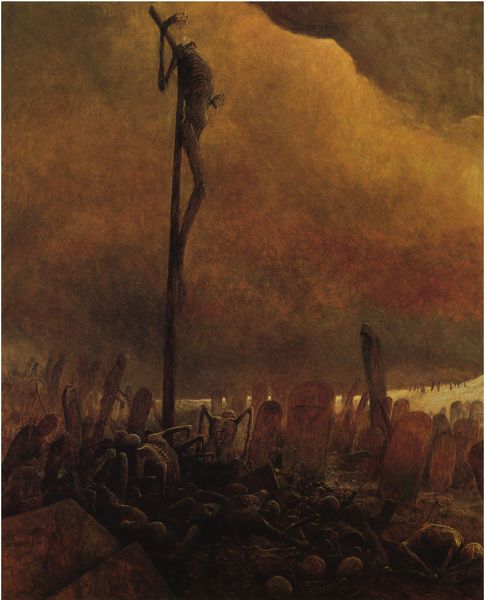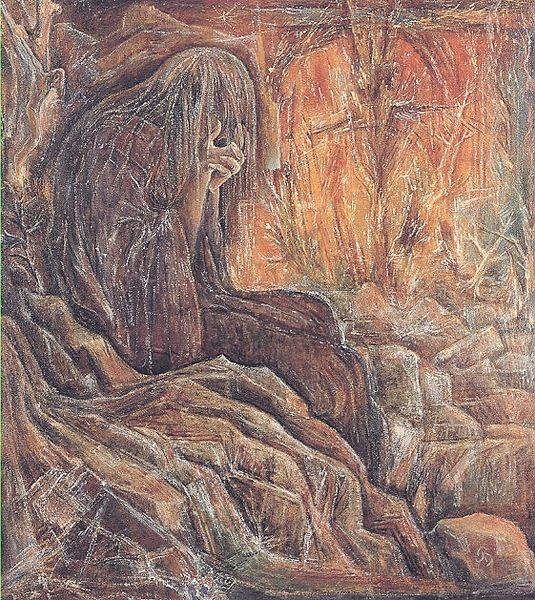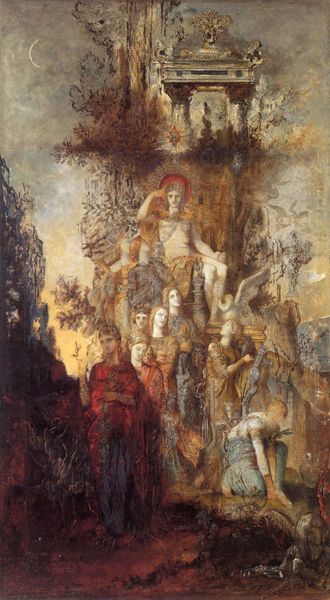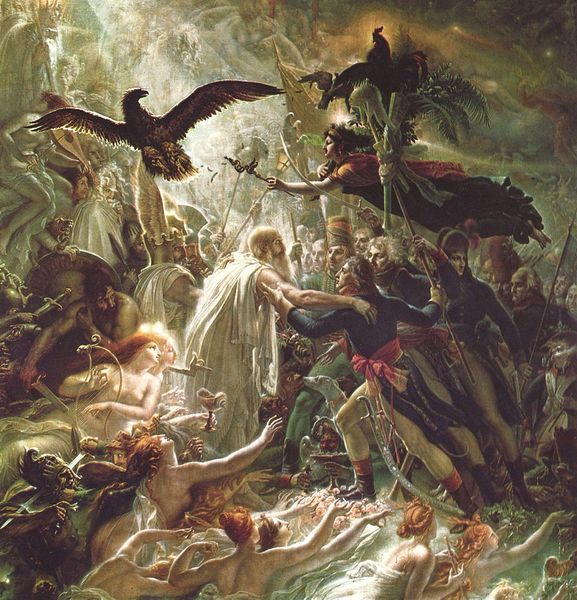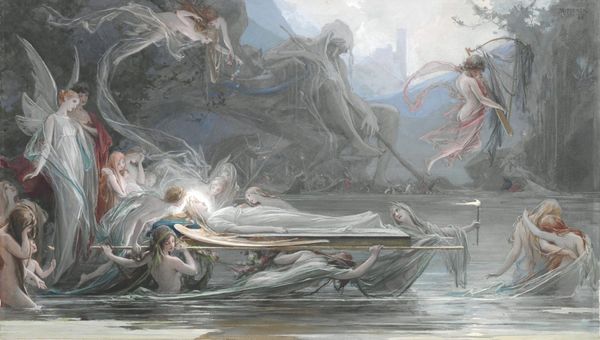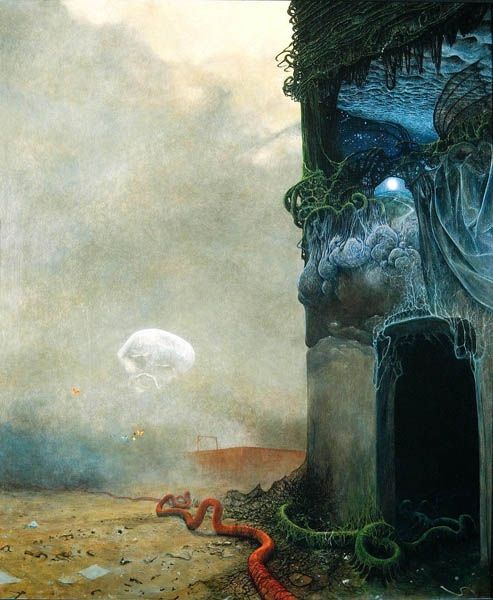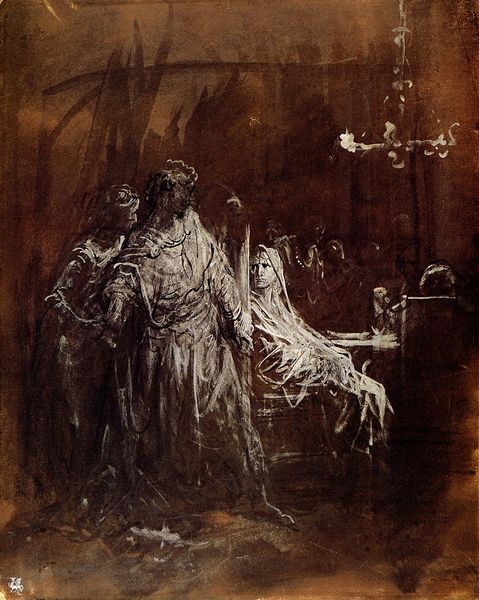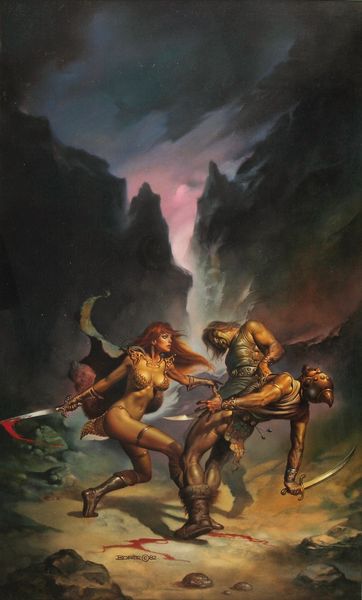
Funérailles de Victor Hugo – la veillée sous l’arc de triomphe 1885
0:00
0:00
Copyright: Public Domain: Artvee
Editor: So, this is Georges Clairin’s “Funérailles de Victor Hugo – la veillée sous l’arc de triomphe,” painted in 1885 with oil paints. The overall feeling is somber, grandiose even, with a ghostly figure floating above what looks like a massive gathering. What stands out to you in terms of its historical context? Curator: This painting offers a potent illustration of how cultural figures become monumentalized in the public imagination. The sheer scale of Hugo's funeral, particularly this vigil under the Arc de Triomphe, speaks to his symbolic weight for the French Republic. Clairin, by depicting this scene, participates in that very process of myth-making. Consider how the spectral figure of Liberty, or perhaps Hugo’s spirit, is superimposed over the military procession and the vast crowd, emphasizing the blending of national identity, republican ideals, and individual genius. What kind of statement do you think that placement makes? Editor: It suggests that Hugo's legacy became intertwined with the ideals of France itself. Almost as if his spirit legitimizes the government. Do you think this painting promotes a particular political message? Curator: Absolutely. By placing this scene within the Arc de Triomphe – a monument commissioned by Napoleon to celebrate military victories – Clairin is deliberately conflating artistic achievement with nationalistic pride. The ghostly figure reinforces the idea of Hugo transcending mere political divides to become a symbol of France, which is quite a clever manipulation of public perception, wouldn't you agree? How effective do you think Clairin was in achieving that ideal? Editor: I think portraying Hugo's funeral this way definitely amplified his impact. The drama, the sheer scale - it transformed him into more than just a writer, and into a cultural icon. Curator: Precisely. This illustrates the power of art in shaping collective memory and reinforcing the narrative that suits those in power. These aren’t passive illustrations; they're active agents in solidifying a specific understanding of history. Editor: So, analyzing how this painting represents Hugo's funeral really opens up how art actively creates and reinforces national narratives. It is an excellent case study of history-making through art.
Comments
No comments
Be the first to comment and join the conversation on the ultimate creative platform.
